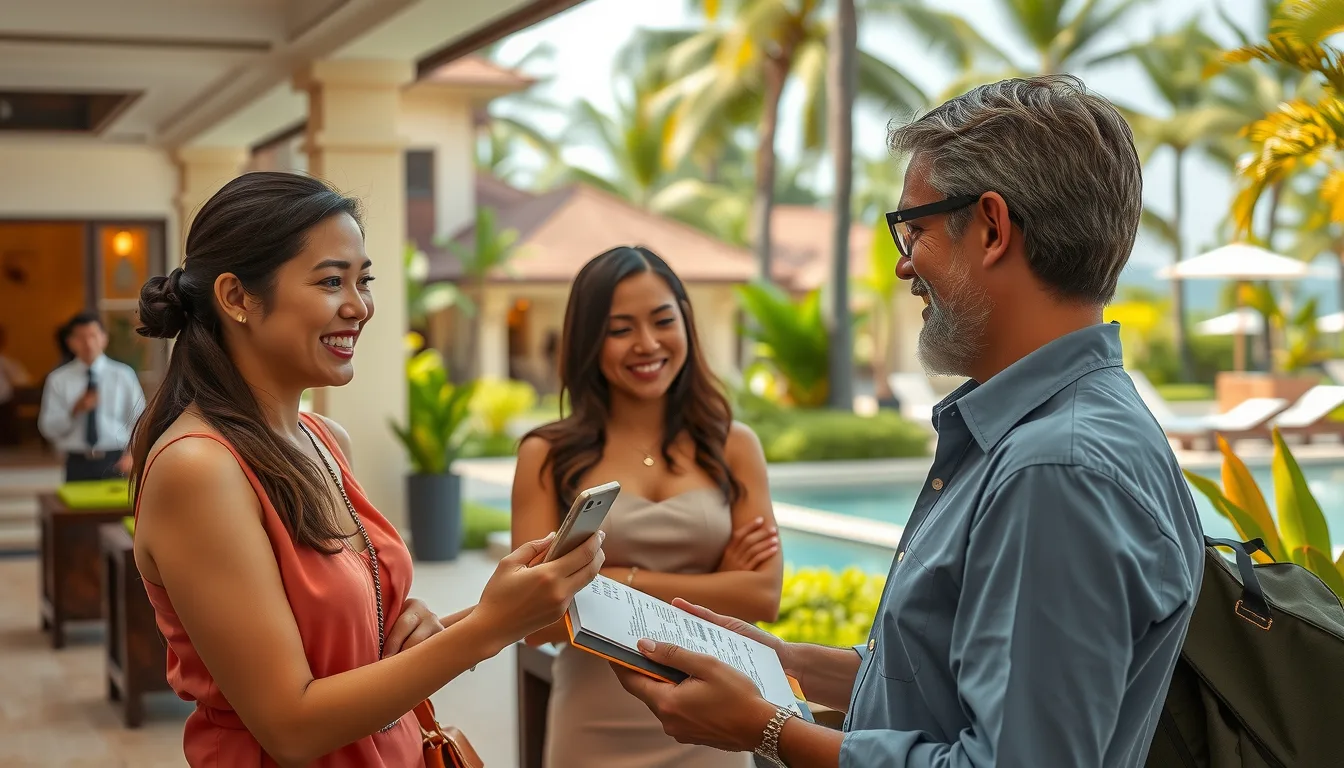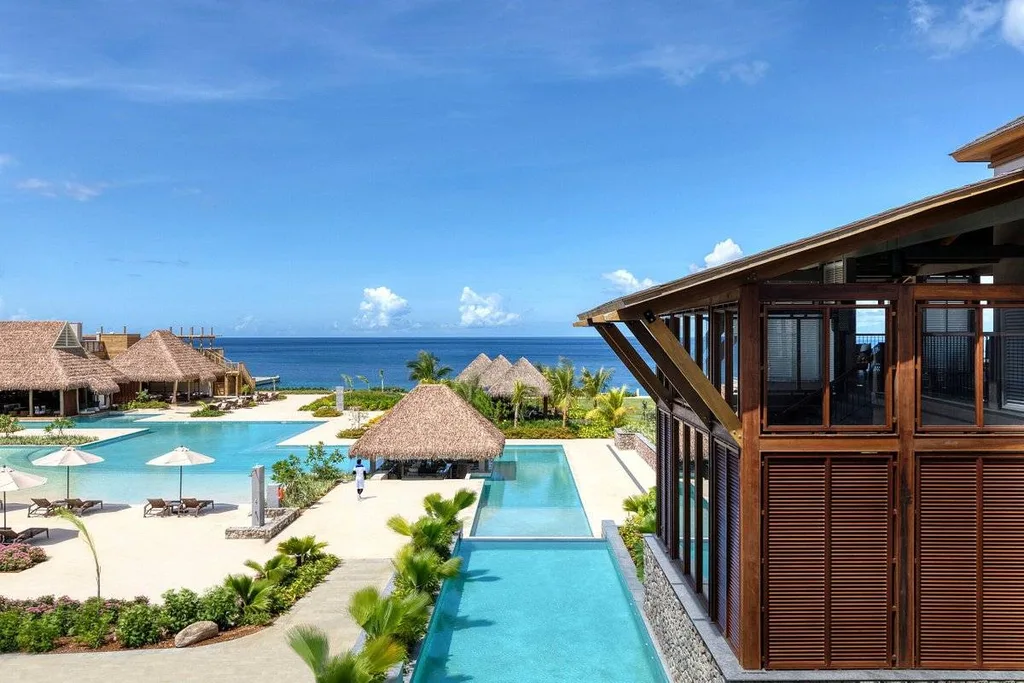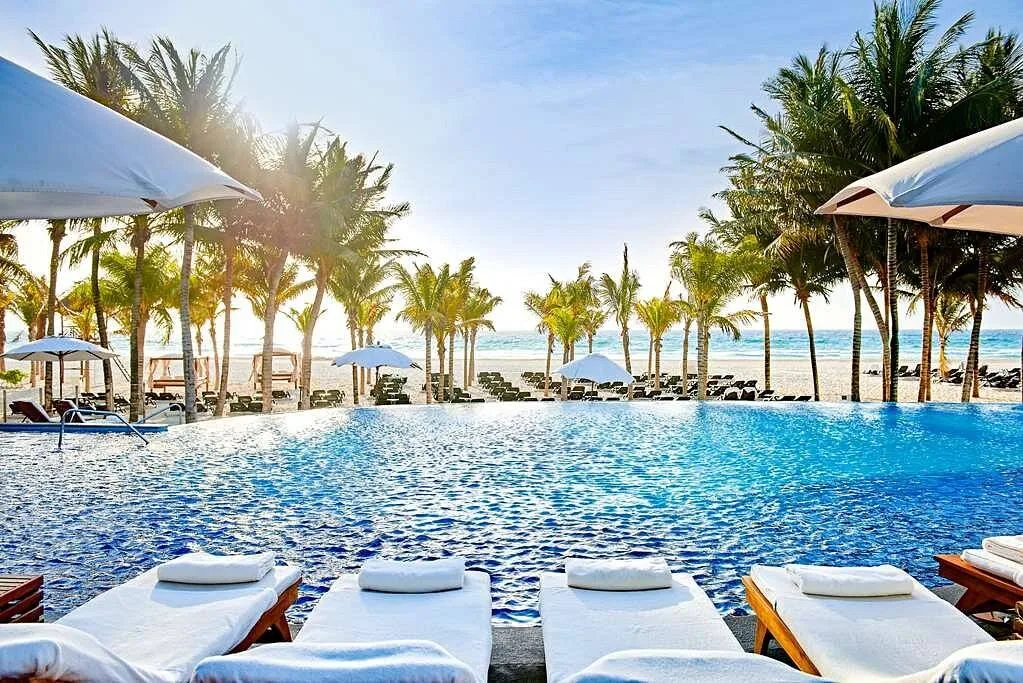Luxury travel should feel effortless—but language barriers can quickly disrupt that dream.
Whether you’re lounging in Bali or dining in the Swiss Alps, clear communication unlocks deeper cultural connection and smoother service.
This guide reveals practical translation tips and emotional strategies to help you navigate foreign languages with confidence.
From key phrases to visual cues, you’ll learn how to communicate effectively and respectfully at luxury resorts worldwide.
Prepare to travel smarter, connect deeper, and enjoy every moment without linguistic stress.
Understanding the Importance of Communication at Luxury Resorts
Luxury resorts are known for providing exceptional services, but even the best resorts can encounter communication issues when guests and staff speak different languages.
Whether it’s ordering room service, requesting special accommodations, or simply engaging in friendly conversation, clear communication is essential.
For Americans, the language barrier can feel daunting, especially if the destination country speaks a language that is not widely spoken in the U.S.
However, overcoming these barriers not only enhances the overall travel experience but also fosters a deeper connection with the local culture.
When guests make an effort to communicate respectfully with staff and locals, it often leads to more positive experiences and even personalized service that would not otherwise be possible.
1. Prepare in Advance with Translation Apps
One of the easiest and most effective ways to break down language barriers is to rely on technology.
Today’s smartphones are equipped with a variety of translation apps that can help you bridge the gap between languages.
Whether you’re in a French-speaking resort in the Alps or a Spanish-speaking resort in Mexico, these apps provide real-time translation, making it easier to communicate your needs.
Some of the most popular translation apps include:
- Google Translate: This app supports over 100 languages and allows you to type, speak, or even use the camera to translate text instantly.
It’s a fantastic tool for overcoming language barriers when you need quick assistance or want to understand written text (like menus or signs).
Google Translate’s real-time voice translation feature is especially helpful in conversations, allowing you to speak directly with someone in another language without awkward pauses.
The app is available for Android and iPhones.
- Microsoft Translator: Another powerful translation tool, Microsoft Translator offers real-time conversation translation, allowing two people speaking different languages to converse naturally without interruptions.
The app also supports over 60 languages and is capable of handling multiple languages in a single conversation, which can be a lifesaver when you’re interacting with multilingual staff at international resorts.
The app is available for Android and iPhones.
- iTranslate: With voice recognition and offline functionality, iTranslate is a versatile app that makes communicating easier when you don’t have access to Wi-Fi.
The app’s camera translation feature allows you to snap a photo of a menu or sign and instantly translate the text, which is invaluable in a luxury resort setting where you may encounter signs or promotional materials in the local language.
The app is available for Android and iPhones.
- SayHi: Known for its user-friendly interface, SayHi provides voice-to-voice translations, allowing for smoother conversations without having to type out long sentences.
It’s particularly useful for getting across simple ideas quickly, which can be helpful when interacting with hotel staff or ordering food at a resort restaurant.
The app is available for Android and iPhones.
While these apps are incredibly useful, it’s important to note that no app is perfect.
Always double-check important details, especially when dealing with complex requests, to avoid any misunderstandings.
Also, be mindful that nuances, slang, or idiomatic expressions may not always be perfectly translated.
In such cases, it’s best to rely on gestures or clarify your meaning in simpler terms.
2. Learn Key Phrases Before You Leave
While translation apps are handy, they can’t replicate the warmth and authenticity that comes from speaking the local language.
As a guest at a luxury resort, showing an effort to communicate in the native language, even if it’s just a few basic phrases, can go a long way in establishing rapport with the staff.
Here are a few essential phrases that will help you navigate the most common situations in any country:
Basic Greetings in Southeast Asia and East Asia:
Thailand
- “Hello” – Sawasdee (สวัสดี)
- “Good morning” – Sawasdee ton chao (สวัสดีตอนเช้า)
- “Goodbye” – La korn (ลาก่อน)
- “How are you?” – Sabai dee mai? (สบายดีไหม?)
In Thailand, the traditional greeting is called the wai, where you place your palms together in a prayer-like position and bow your head slightly.
This gesture can be used when greeting others.
Indonesia
- “Hello” – Halo
- “Good morning” – Selamat pagi
- “Goodbye” – Selamat tinggal (for those staying behind), Selamat jalan (for those leaving)
- “How are you?” – Apa kabar?
In Indonesia, a common and polite greeting includes a smile and a handshake, but it’s important to be aware that handshakes might be gentler than in Western countries, particularly when greeting women.
Cambodia
- “Hello” – Sue-a-sa-die (សួស្តី)
- “Good morning” – Arun sues-se-die (អរុណសួស្តី)
- “Goodbye” – Lee hawy (លាហើយ)
- “How are you?” – Soak-sa-bye-ru-tay? (សុខសប្បាយឬទេ?)
Cambodians often greet each other with a gesture similar to the wai in Thailand, called sampeah, where you place your palms together and bow your head.
This shows respect and politeness, especially when greeting elders.
Japan
- “Hello” – Konnichiwa (こんにちは)
- “Good morning” – Ohayou gozaimasu (おはようございます)
- “Goodbye” – Sayonara (さようなら)
- “How are you?” – Ogenki desu ka? (お元気ですか?)
In Japan, bowing is an important cultural gesture, and it’s common for people to bow slightly when greeting or thanking someone.
A polite smile is also well-received in casual greetings.
Taiwan
- “Hello” – Nǐ hǎo (你好)
- “Good morning” – Zǎo ān (早安)
- “Goodbye” – Zài jiàn (再见)
- “How are you?” – Nǐ hǎo ma? (你好吗?)
Taiwanese people value politeness in communication.
A friendly smile and a bow when greeting others is common, but casual handshakes are also acceptable.
Malaysia
- “Hello” – Halo (pronounced the same as in English)
- “Good morning” – Selamat pagi
- “Goodbye” – Selamat tinggal (when someone stays), Selamat jalan (when you leave)
- “How are you?” – Apa khabar?
In Malaysia, especially in more traditional settings, people often greet each other with a handshake.
The gesture is generally brief, and a slight nod or smile shows friendliness.
Laos
- “Hello” – Sabaidee (ສະບາຍດີ)
- “Good morning” – Sabaidee ton chao (ສະບາຍດີຕອນເຊົາ)
- “Goodbye” – La korn (ລາກ່ອນ)
- “How are you?” – Sabaidee baw? (ສະບາຍດີບໍ?)
In Laos, the traditional greeting is the nop, which is similar to the wai in Thailand, where hands are placed together and the person bows.
A smile is always appreciated when greeting others.
Vietnam
- “Hello” – Xin chào (pronounced “sin chao”)
- “Good morning” – Chào buổi sáng (pronounced “chao buoi sang”)
- “Goodbye” – Tạm biệt (pronounced “tam biet”)
- “How are you?” – Bạn khỏe không? (pronounced “ban khoe khong?”)
In Vietnam, a slight bow or nod is common when greeting someone, especially in more formal settings.
However, a handshake is also common, particularly among men.
Essential Resort Phrases:
- “Do you speak English?” – Phải chăng bạn nói tiếng Anh? (Vietnam), Apakah Anda berbicara bahasa Inggris? (Indonesia), Phải bạn nói tiếng Anh? (Laos)
- “I need help” – Tôi cần giúp đỡ (Vietnam), Saya perlu bantuan (Malaysia), Saya butuh bantuan (Indonesia)
- “Where is the bathroom?” – Phòng vệ sinh ở đâu? (Vietnam), Di mana kamar mandi? (Indonesia), Toilet di mana? (Malaysia)
- “Can I have the bill, please?” – Làm ơn đưa hóa đơn (Vietnam), Tolong beri saya bil (Malaysia), Tolong beri saya bil (Indonesia)
If you’re traveling to a luxury resort, the staff will likely know some basic English, but using these common phrases shows respect for the local culture and may make your stay feel even more special.
Even a simple greeting like sawasdee or halo can make a positive impression, and you may find that locals appreciate your effort to speak their language.
Many luxury resorts, particularly those in popular tourist destinations, train their staff to be fluent in English.
However, learning a few key phrases still enhances the experience, showing that you care about connecting with the local culture.
Additionally, many language apps include phrasebooks that cover specific situations, such as dining, medical emergencies, and shopping.
You can download these sections before your trip so that you’re prepared for any scenario.
3. Non-Verbal Communication Strategies
In situations where language barriers are too strong to overcome with words alone, non-verbal communication becomes an essential tool.
Resort staff are generally well-trained to pick up on body language, facial expressions, and gestures to assist guests in various situations.
Here are some non-verbal communication strategies to keep in mind:
- Gestures: Many universal gestures, such as a smile, thumbs-up, or pointing, can convey meaning even if you’re unable to communicate verbally.
When asking for directions, pointing to a map or showing a location on your phone can be more effective than trying to translate complex instructions.
Simple hand gestures, like motioning towards a chair to indicate “sit,” or holding your hands in a particular shape to ask for something specific, can bridge the gap between you and your host.
- Body Language: If you’re trying to communicate a feeling or request, your posture and movements can speak volumes.
For instance, if you’re looking for assistance with luggage, mimicking the action of carrying a bag may help signal to the staff that you need help.
Similarly, if you’re requesting more towels or room service, showing a gesture like pretending to pour a drink or pointing to the area where you’d like something can make things clearer.
- Written Communication: If all else fails, don’t hesitate to write down your request.
Resort staff will often appreciate the effort, and the written word can bridge the gap more effectively than spoken communication in some situations.
For example, if you’re staying at a resort with a menu in another language, it’s not uncommon to jot down the name of the dish you’re interested in and show it to a waiter.
Some luxury resorts may even have multilingual menus, but if not, your written notes may still be a helpful tool.
- Technology for Visual Communication: Besides translation apps, you can use your phone’s camera to take photos or even videos that convey what you’re trying to communicate.
For instance, if you’re interested in booking a spa treatment, you could show the treatment menu to the concierge or spa receptionist and point to your desired option.
In many cases, this visual aid will convey your request more clearly than spoken language.
4. Engage with Hotel or Resort Concierge Services
Luxury resorts often offer concierge services that can help you with language barriers.
These staff members are experts in helping guests navigate local customs and can assist with anything from making restaurant reservations to organizing day trips in the local area.
When staying at a luxury resort, it’s always a good idea to take advantage of these services.
Not only can they offer translation tips and help facilitate communication with local vendors, but they may also be able to recommend specific activities that match your interests, all while ensuring you experience local culture in a respectful manner.
Concierges are often multilingual and are experts at managing requests from international guests.
Don’t hesitate to ask for their assistance, especially if you feel that language barriers may prevent you from fully enjoying an activity or experience.
The concierge can often provide more detailed information about local customs, restaurant etiquette, and best practices for tipping, which can all help smooth over any cultural misunderstandings.
Additionally, luxury resorts may have partnerships with tour guides who are fluent in multiple languages.
If you are planning on going on a local excursion, the concierge can arrange for a guide who speaks your language, ensuring that you don’t miss any of the cultural context that enhances your experience.
5. Practice Patience and Cultural Sensitivity
One of the most important strategies for overcoming language barriers abroad is simply practicing patience.
Many luxury resort staff members are eager to assist you, but communication may take a little longer when there’s a language difference.
Maintain a calm demeanor and be prepared to repeat yourself or use different methods of communication if necessary.
Remember that you are a guest in their country, and cultural differences may impact the way language is used.
Showing respect and understanding of local customs can go a long way in ensuring a positive interaction.
Whether you’re trying to understand the local menu or discussing spa treatments, having patience and an open mind will enrich your experience.
For example, different cultures have varying norms about personal space, eye contact, and politeness.
In some cultures, direct eye contact might be seen as rude, while in others, it’s expected.
Understanding these subtleties will help prevent unnecessary misunderstandings and help you connect better with the resort staff.
6. Hire a Local Guide or Translator
For more complex travel experiences, especially when exploring off-the-beaten-path destinations or engaging in specialized activities like guided tours or adventure excursions, hiring a local guide or translator can be an excellent investment.
Not only will you overcome language barriers, but you’ll also gain deeper insight into the local culture, history, and hidden gems of your destination.
Many luxury resorts offer connections to trusted local guides who are familiar with the area and fluent in multiple languages.
This ensures that you can have a seamless experience without worrying about language differences while on excursions.
A professional guide will also help you understand the cultural context of the places you visit, making your experience richer and more meaningful.
Additionally, if you plan to engage in high-end shopping, fine dining, or visit local markets, having a translator by your side can help you understand the nuances of local customs, bargain for goods, or fully appreciate the authenticity of your experience.
7. Use Visual Aids
Visual aids are a fantastic resource when trying to overcome language barriers.
Many luxury resorts provide brochures, menus, or signage with images that can help you understand what’s being offered, whether it’s an activity, a dish, or a service.
If you don’t understand the language, look for pictures that can give you a clearer idea of what to expect.
Moreover, when you encounter a situation where you can’t fully communicate, try using your phone’s camera to take a picture of the item or place you’re referring to.
This can help you convey your needs more clearly to the staff, especially if you’re in a remote area with limited access to digital tools.
A Seamless Experience Awaits
Overcoming language barriers abroad is a crucial skill for any American traveling to luxury resorts worldwide.
By preparing in advance with translation tips, utilizing technology, practicing patience, and being open to non-verbal communication, you can navigate any language challenges with ease.
Remember that the key to a smooth, enjoyable experience lies in understanding, respect, and a willingness to immerse yourself in the local culture.
Whether you’re ordering a cocktail by the beach in Thailand or arranging a private tour of a vineyard in Italy, overcoming language barriers enhances the connection between you, the local people, and the unforgettable experiences you’ll cherish forever.
Enjoy your travels, communicate with confidence, and let the luxury of the world’s finest resorts unfold before you!
FAQ – Overcome Language Barriers for Seamless Resort Travel
What makes communication essential at luxury resorts?
Clear communication unlocks better service, smoother experiences, and deeper cultural connection.
It helps avoid misunderstandings and supports respectful interactions with staff and locals.
Guests who communicate effectively often receive more personalized attention and care.Which translation apps work best for resort travel?
Google Translate offers real-time voice and camera translation across 100+ languages.
Microsoft Translator supports multilingual conversations and offline access.
iTranslate and SayHi streamline quick exchanges with voice-to-voice translation.
These apps help you navigate menus, signage, and conversations with ease.Should I learn key phrases before arriving?
Yes—learning basic greetings and polite expressions builds rapport and shows cultural respect.
Even simple phrases like “hello” or “thank you” can unlock warmer service and local goodwill.
Phrasebooks and app-based language guides support quick learning before your trip.How can gestures and body language help when words fail?
Gestures like pointing, smiling, or miming actions clarify your needs instantly.
Body language conveys emotion and intent, especially in service interactions.
Visual aids like photos or maps enhance clarity when spoken language is limited.Do luxury resorts offer concierge support for language challenges?
Absolutely—concierge teams are trained to assist with multilingual communication.
They can book excursions, translate requests, and guide you through local customs.
Concierges streamline your experience and help you connect with the destination.








